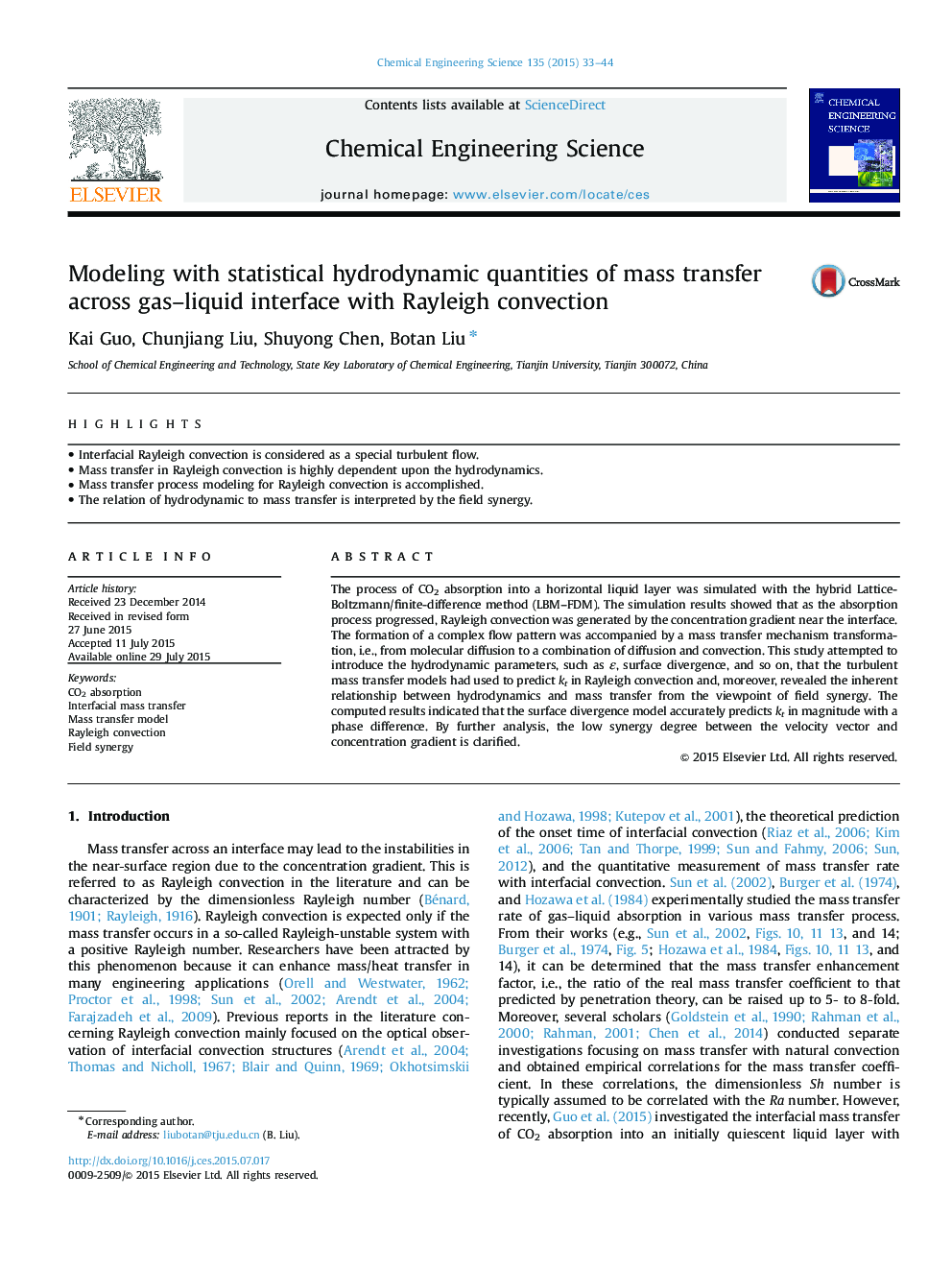| Article ID | Journal | Published Year | Pages | File Type |
|---|---|---|---|---|
| 154688 | Chemical Engineering Science | 2015 | 12 Pages |
•Interfacial Rayleigh convection is considered as a special turbulent flow.•Mass transfer in Rayleigh convection is highly dependent upon the hydrodynamics.•Mass transfer process modeling for Rayleigh convection is accomplished.•The relation of hydrodynamic to mass transfer is interpreted by the field synergy.
The process of CO2 absorption into a horizontal liquid layer was simulated with the hybrid Lattice-Boltzmann/finite-difference method (LBM–FDM). The simulation results showed that as the absorption process progressed, Rayleigh convection was generated by the concentration gradient near the interface. The formation of a complex flow pattern was accompanied by a mass transfer mechanism transformation, i.e., from molecular diffusion to a combination of diffusion and convection. This study attempted to introduce the hydrodynamic parameters, such as ε, surface divergence, and so on, that the turbulent mass transfer models had used to predict kt in Rayleigh convection and, moreover, revealed the inherent relationship between hydrodynamics and mass transfer from the viewpoint of field synergy. The computed results indicated that the surface divergence model accurately predicts kt in magnitude with a phase difference. By further analysis, the low synergy degree between the velocity vector and concentration gradient is clarified.
